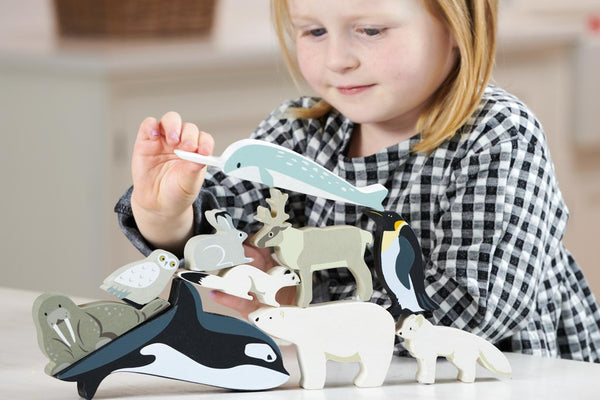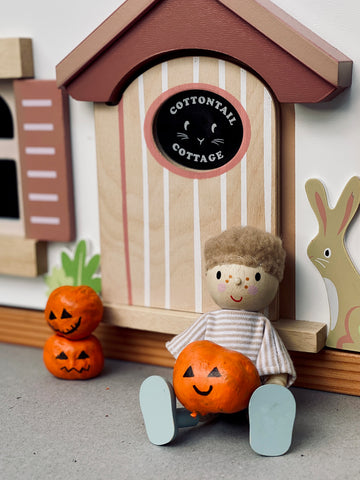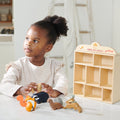Toy rotation | Banish boredom with one simple change

Does your child get bored, even when there is a playroom full of toys?
Put too many toys out at once and, rather than enjoying endless hours of fun, your child will become restless and her play will lack focus.
Why?
Too much choice is distracting. Just when she is settling down to explore an activity in depth, she catches sight of something more interesting across the room.
But soon enough, the cycle repeats itself. A glimpse yet another toy and off she goes to explore.
And because she doesn’t stay with any particular toy for very long, she doesn’t see its depths, she doesn’t meet its challenges. She plays with toys in a superficial way and their potential is never understood.
So what’s the solution? Have fewer toys out at once.

What is toy rotation?
Instead of having all the toys in the house out at once, you divide them into smaller, more manageable groups. Every few days you swap - rotate - the toys so there is always something fresh to play with.
How does it work?
There are no rules with toy rotation. You can do it any way you like. Any time you remove toys from the play space for a few weeks, they are welcomed as if they were new upon their return.

Having said that, you will get better results if you group the toys in some way. When thinking about how to categorise toys, a good tip is to think of the different types of toys almost like food groups, and try to ensure that something from each group is available. Here’s a table showing how you might do it (but remember, this needn’t be complicated and if you don’t always manage to get something from each group in, it’s really not the end of the world):

Don’t rotate big toys
If a toy is sufficiently open-ended that it can form the basis for all kinds of play, there’s not really any need to rotate it. A three-year-old will probably enjoy having a doll’s house or farm to play with, some figures and a few blocks to extend the scene. The scene will change with her imagination and the scenarios she decides to work with (a play kitchen can be a cafe one day, a home-kitchen the next), so there’s probably not much need to rotate it out.
How often should you do it?
You can rotate daily or weekly or even fortnightly. The only rule is that you leave the toys out for long enough that your child has the opportunity to explore their play possibilities fully, but not so long that boredom sets in. A week is usually a good length of time. But some toys merit longer stints than others. For example, a small-world scene like a farm or a city floor mat, may provide days of fun, but threading materials could become boring by the afternoon. Observe your child at play and use your judgement to inform your decisions.

Where do you put the toys you are taking away?
This might sound like an odd question, but it’s actually quite important that your child doesn’t have easy access to the toys that are taking a break. We are all for child-friendly, easy-to-use toy storage, but if the toys on rotation are too visible and accessible, you might find they are distracted by them, and will want to get them out or pull them down if you turn your back for five minutes.
Our advice is out of sight, out of mind. Try to find a place that is well away from the toys they are playing with and don’t let them know where it is. A bedroom wardrobe or another cupboard away from view is ideal. If space is tight, simply making sure they are out of reach is a good start.
What if my child is really enjoying playing with a certain toy but it’s been out for a while and it’s time to rotate? If they ask to keep something specifically, we’re inclined to let them. This isn’t a rigid set of rules! And hopefully it means they’re inspired to do something with it.
Toy rotation leads to creativity
If your toy collection is limited, rather than taking toys away in order to rotate them, why not rotate what you add. A wooden train set gets stale after a while but you can breathe new life into it by bringing in other toys and materials.
For example:
• Week 1: farm animals
• Week 2: craft materials
• Week 3: make junk model buildings (i.e. using the
contents of your recycling bin)
• Week 4: loose parts

Toy rotation throughout the year
Toy rotation is a great way to explore the calendar’s many celebrations and the changing seasons. At Christmas, you could augment your toy groups with cotton wool for snow and matchbox ‘presents' ready to be wrapped in paper and tied up with string. What could you add at Easter or Halloween? How about making play food? In this way, even the oldest, most familiar toys can get a new spark.

Final word
Why not try toy rotation today? Which toys could you put away for a few weeks? What interesting and unusual combinations could you offer your child to breathe new life into old materials?
Try it now. You won’t believe how effective it is.
...and dont forget, we have lots of free activity sheets for you to download that will extend the play of our wooden toys.








